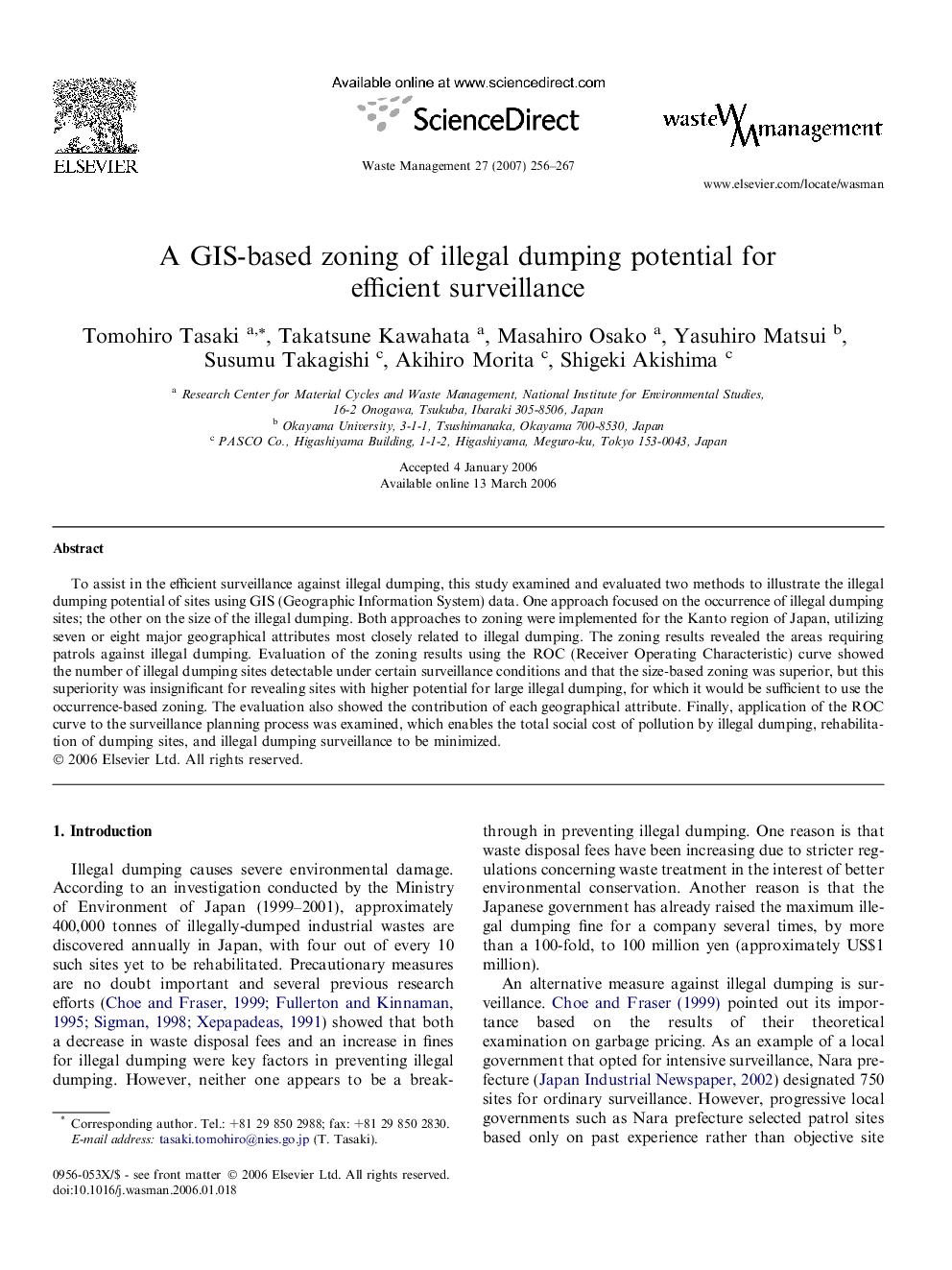| Article ID | Journal | Published Year | Pages | File Type |
|---|---|---|---|---|
| 4474270 | Waste Management | 2007 | 12 Pages |
To assist in the efficient surveillance against illegal dumping, this study examined and evaluated two methods to illustrate the illegal dumping potential of sites using GIS (Geographic Information System) data. One approach focused on the occurrence of illegal dumping sites; the other on the size of the illegal dumping. Both approaches to zoning were implemented for the Kanto region of Japan, utilizing seven or eight major geographical attributes most closely related to illegal dumping. The zoning results revealed the areas requiring patrols against illegal dumping. Evaluation of the zoning results using the ROC (Receiver Operating Characteristic) curve showed the number of illegal dumping sites detectable under certain surveillance conditions and that the size-based zoning was superior, but this superiority was insignificant for revealing sites with higher potential for large illegal dumping, for which it would be sufficient to use the occurrence-based zoning. The evaluation also showed the contribution of each geographical attribute. Finally, application of the ROC curve to the surveillance planning process was examined, which enables the total social cost of pollution by illegal dumping, rehabilitation of dumping sites, and illegal dumping surveillance to be minimized.
